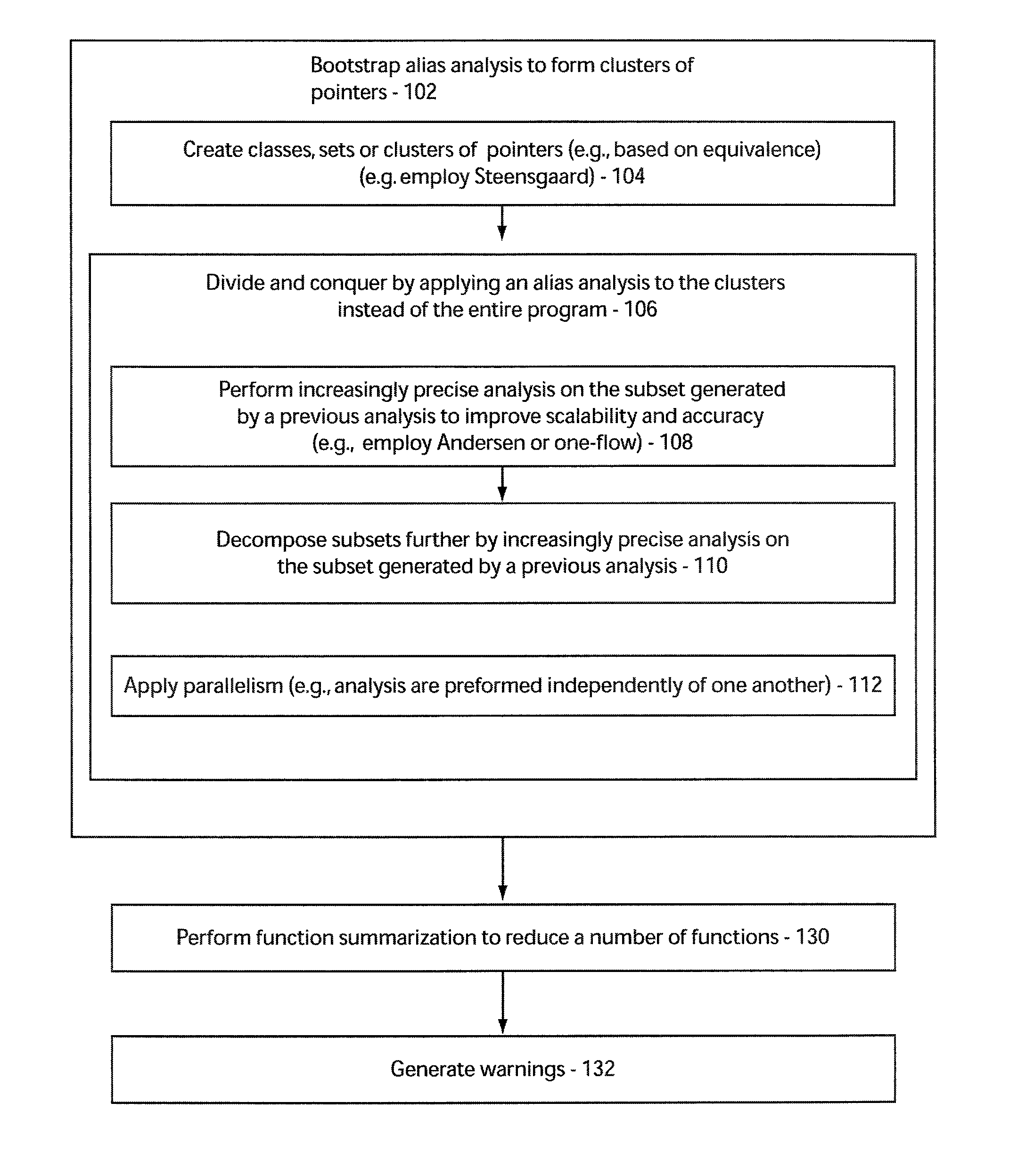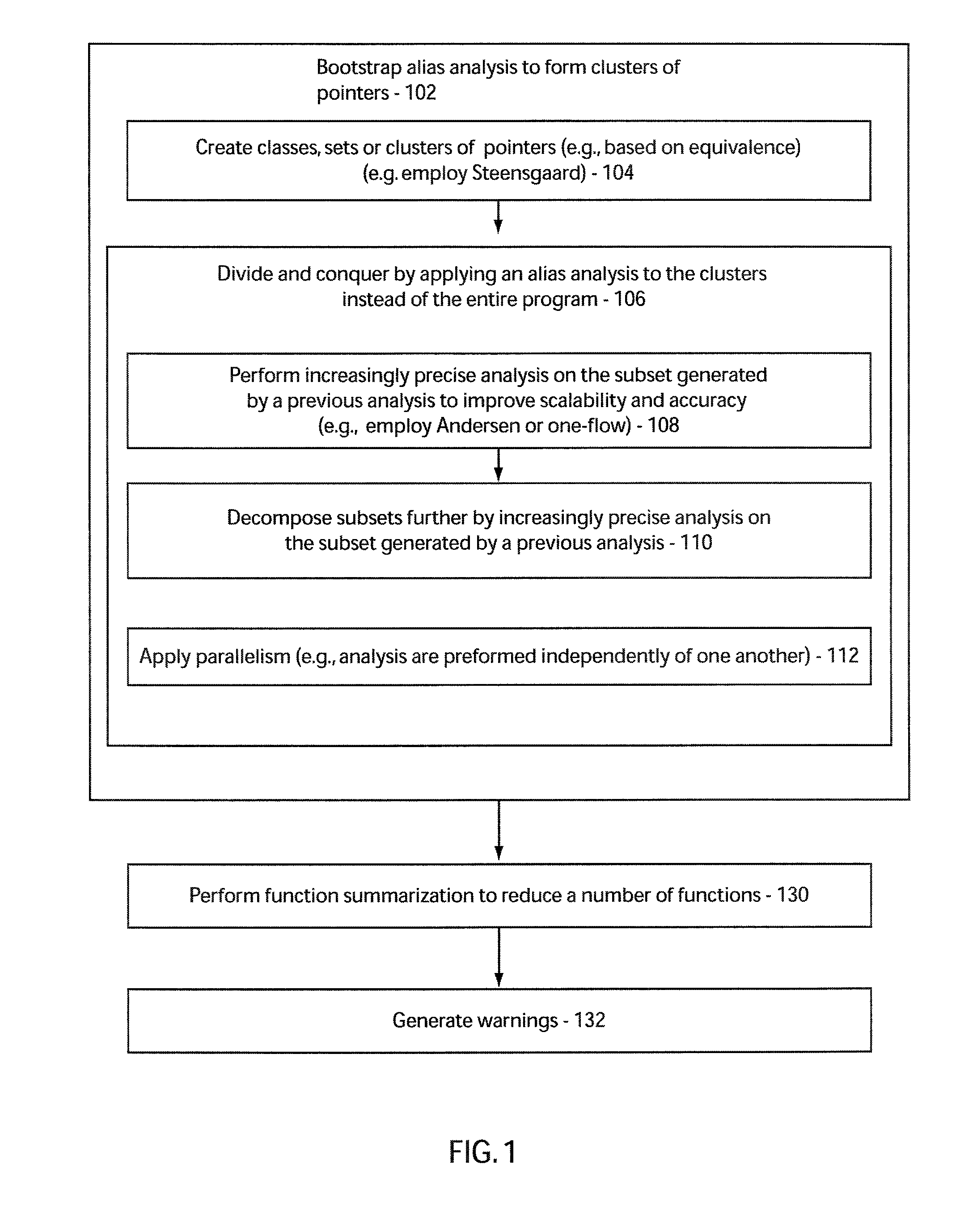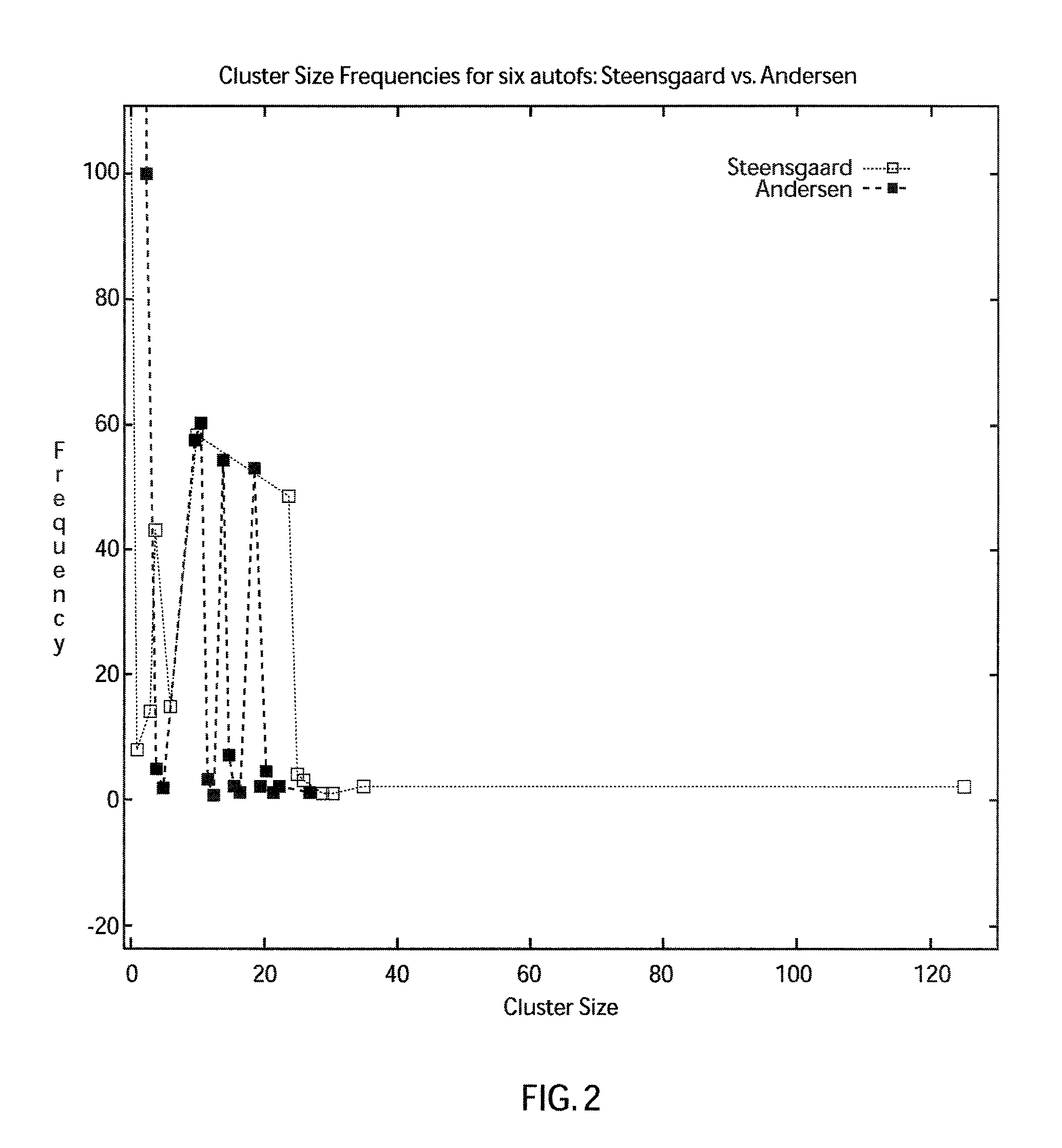System and method for scalable flow and context-sensitive pointer alias analysis
a pointer analysis and pointer alias technology, applied in error detection/correction, instruments, computing, etc., can solve the problems of many bogus warnings, and the accuracy and scalability of most static error detection methods. achieve the effect of increasing the bogus warning ra
- Summary
- Abstract
- Description
- Claims
- Application Information
AI Technical Summary
Benefits of technology
Problems solved by technology
Method used
Image
Examples
Embodiment Construction
[0026]In accordance with the present principles, a framework for improving both the scalability and accuracy of pointer alias, irrespective of flow or context-sensitivities is provided. In a particularly useful embodiment, this is achieved by leveraging a combination of divide and conquer, parallelization and function summarization.
[0027]First, small subsets of pointers are identified such that the problem of computing aliases of any pointer can be reduced to computing the aliases in these small subsets instead of the entire program. To identify these subsets, we first apply a series of increasingly accurate but highly scalable (context and flow-insensitive) alias analyses in a cascaded fashion such that each analysis Ai works on the subsets generated by the previous one Ai-1. Restricting the application of subsets generated by Ai-1 instead of the entire program improves its scalability. In other words, Ai is bootstrapped by Ai-1. Once these small subsets have been computed, to make...
PUM
 Login to View More
Login to View More Abstract
Description
Claims
Application Information
 Login to View More
Login to View More - R&D
- Intellectual Property
- Life Sciences
- Materials
- Tech Scout
- Unparalleled Data Quality
- Higher Quality Content
- 60% Fewer Hallucinations
Browse by: Latest US Patents, China's latest patents, Technical Efficacy Thesaurus, Application Domain, Technology Topic, Popular Technical Reports.
© 2025 PatSnap. All rights reserved.Legal|Privacy policy|Modern Slavery Act Transparency Statement|Sitemap|About US| Contact US: help@patsnap.com



